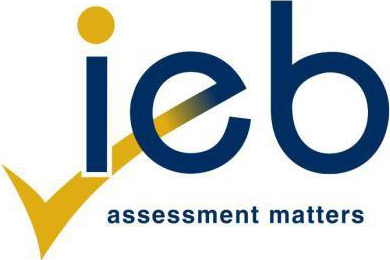Campaign against Racism and Sexism
Author: Tim Nuttall
There are many fault-lines of division and stereotyping in our society, including class, ethnicity, religious affiliation, sexism, homophobia and xenophobia. At this point in time in our society, and in our school community, I feel that there are good reasons to focus on race and racism as a priority. Alongside this, the relations between boys and girls, between men and women, are also of paramount importance. The community of St Stithians has both an obligation and an opportunity to engage with, and address, racism and sexism.
The topic of racism is front of mind in contemporary South Africa. Political scientist Stephen Friedman wrote in Business Day 13 July 2016: ‘Negotiating a way out of racism is difficult and risky. It may need tough bargaining and creative solutions. … Despite all the attempts to wish it away, racism remains this country’s most serious problem.’ City Press Editor Ferial Haffajee, writes in her What if there were no whites in South Africa?: ‘When black fury meets white denial, you have the combustible and fundamentally changed race relations we live in today [2015].’ page 116. Haffajee’s book, and a number of others recently published, seek to understand the rupturing of the veneer of the ‘rainbow nation’.
What is clear is that any engagement with racism needs to understand the phenomenon as much more complex that what individuals say or think – as much as this tends to be the media focus. Racism is reflected in the structures of our society, with their deep roots in, and long shadows cast by, the racialized policies of apartheid. These policies pushed black people to the bottom and to the edge of society, and created pools of white privilege in its upper levels. The social, educational and economic underpinnings of this privilege and inter-generational transfers are far less visible than the political markers of our new democracy and the creation of a new black political elite. Young black South Africans, over the last two years, are targeting these underpinnings and resisting exclusion from inherited norms.
The complex topic of race, racism and race relations is one that we should be grappling with openly in the St Stithians community. There is a need for speaking, listening lots of both, and forging a community of belonging. There is a need for respect and recognition of our common humanity, and – in a Christian school – affirmation of the belief that each human is created in God’s image. Taking the cue from the current ferment in our wider South African society, we need to examine and re-examine our structures of inclusion and inclusion. What values, norms and practices are being expressed and lived out at St Stithians, and do these reflect or reinforce racism? How are adults, who grew up under apartheid, influencing the views of their children? How can our students actively assist in charting ways forward, helping to free their parents from the baggage of the past?
As our Superintendent Chaplain, Dan Nkomo, put it in a College Executive discussion: ‘We have put old wine in new wineskins; we need to unlearn the past, and re-learn the future.’
What is racism? A working definition combines racial discrimination with power relations which dominate or exclude. To discriminate racially is to isolate and act against individuals or groups largely on the basis of the colour of a person’s skin. When combined with the exertion of power, racial discrimination becomes racism – destructive and demeaning.
We need to develop a common language in our understanding of ‘racism’ as a phenomenon. The term can become a catch-all phrase that is reached for too easily and this does not help us to progress as we seek to educate against racism, and eradicate it, at St Stithians College.
One way to sharpen our understanding of racism is to tell our stories of experiences, and then to judge the extent to which such experiences are, or are not, racist. We should not shy away from difficult and courageous conversations. While we clarify and deal with racism, we should also sharpen our understanding of the many prisms through which human experiences can be viewed.
In addition to the campus Transformation Committee, which is a Council Committee, each school has a transformation portfolio in the PTA, and the Boys’ College and the Girls’ College have student transformation committees. I undertake, together with these bodies, to advance our conversations about and against race and racism. Last term’s Rector Connect was explicitly focused on this topic, and I thank those parents who attended and participated.
During the third term there have been a multitude of purposeful conversations addressing race and racism, involving students and staff, particularly. We are also proceeding with the creation of a campus Transformation and Diversity Committee which will provide a vehicle for connecting and advancing initiatives in the schools and campus departments.
I have focused above on racism. A second focus at St Stithians should be on addressing sexism.
We live in a society with deeply entrenched patriarchal practices and worldviews, and very alarming statistics of gender violence and abuse. The analysis of sexism can proceed on the same lines as racism – the language, the stereotyping, the norms, the invisible privileges, the power relations and the social structures. How do boys and men speak about and relate to girls and women? How does discriminatory talk combine with male power to create sexism? How do the boys’ schools relate to the girls’ schools? It is important to reflect on the extent to which sexism is manifest and lived at St Stithians, and not to shy away from courageous conversations about what we see and do.
In responding to both racism and sexism, the Honour Code and Saints Character provide us with a language to build a school community which lives and works in ways that seek consciously to counter, and to move beyond, racism and sexism. The first theme of Strategy 2025 is School Character and it is here that our conversations need to be located. The leadership of our College faces a collective opportunity to speak and act in ways which tackle racism and sexism. Let us be open-hearted, open-minded and at the same time clear in our values.
As stated by me at Founders’ Day:
At St Stithians there is no place for negative and destructive stereotyping; of grouping people in categories that break down and hurt, that limit and restrain, rather than affirm and build up.
There is no place for racism. There is no place for sexism.
Saying no to racism, no to sexism are the two great identity challenges of South African society today – our wounded society with its divided past that needs healing and restoration.
Let us be a College where we think before we speak.
Where we listen before we pronounce.
Where brotherhood and sisterhood include one and all.
Where we drive out derision of the other.
Where we talk openly and courageously about our hurts, fears and hopes.
Where we define racism and sexism, and act against it.
Where we celebrate diversity of race, culture, class and gender.
Where dignity is affirmed.
Where we Honour God, Self and Other.
Where we enable each individual to know self and be self.




